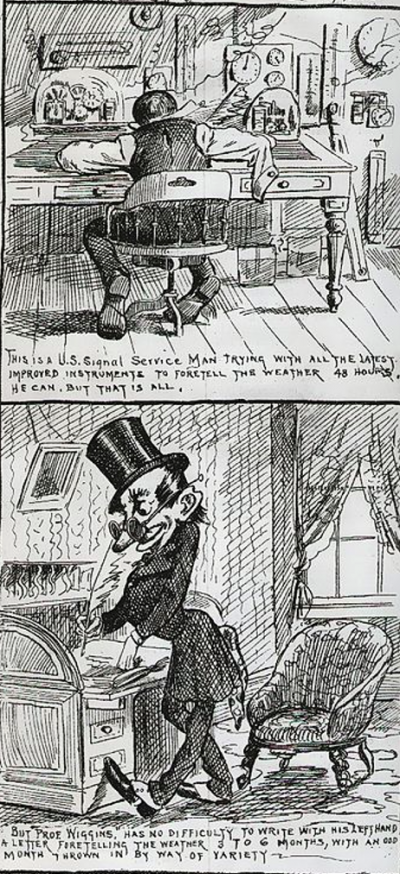HIST 4805A: History of Climate
Fall 2022-Winter 2023
Instructor: Professor Joanna Dean
Introduction: The climate crisis has been many years in the making. This course will ask how we got here. We will develop our course outline in the first class, based on student interests, Shannon lectures, recent events, and emerging literature. In previous years we have covered the following themes:
- How has our perception of weather and climate changed over time?
- How did technology (thermometers, barometers and other devices, but also central heating and air conditioning) change our perception of weather?
- How have societies dealt with rapid climate change in the past? Why did the Norse leave Greenland (but the Thule did not)?
- Were European witchcraft trials linked to the Little Ice Age?
- How can we make sense of the magical world of weather almanacs ?
- Who was Ezekial Stone Wiggins, and how did this Ottawa weather prophet become world famous?
- How has weather been depicted by artists such as Claude Monet and Tom Thomson?
- What is petroculture?
- What can we learn from alternative energy movements of the 1970s?
- Who invented the idea of the climate footprint? (Hint: it was not the environmentalists.)
- Is the Montreal Protocol a good model for climate action?
- How did computer modelling shape the predictions of the Intergovernmental Panel on Climate Change (IPCC)?
Class Format: We meet in person once a week in a three-hour block to discuss readings and work collaboratively on research and writing. The course will be integrated with the Shannon Lectures for 2022/2023, so that students will have an opportunity to meet leading historians working on climate and weather. Time will be set aside in the winter term for research and writing.
Aims and Goals: Our focus in the first term is on learning climate history by discussing readings and meeting leading climate historians. The focus in second term is on individual student projects. Thinking about the consequences of climate change can be paralysing. This class is built upon the idea that hope comes from action with the support of a collaborative community.
Assessment: Students will be graded for their written and oral contributions to the seminar discussions (20%), and their research project (80%). The project will be graded in several stages: research proposal and annotated bibliography (10%), powerpoint presentation (10%), complete draft essay or project (5%), peer review of another student’s project (5%), final project (50%). Students are welcome to submit their work in a format other than the traditional essay.
Questions? Please email: Joanna.Dean@carleton.ca
